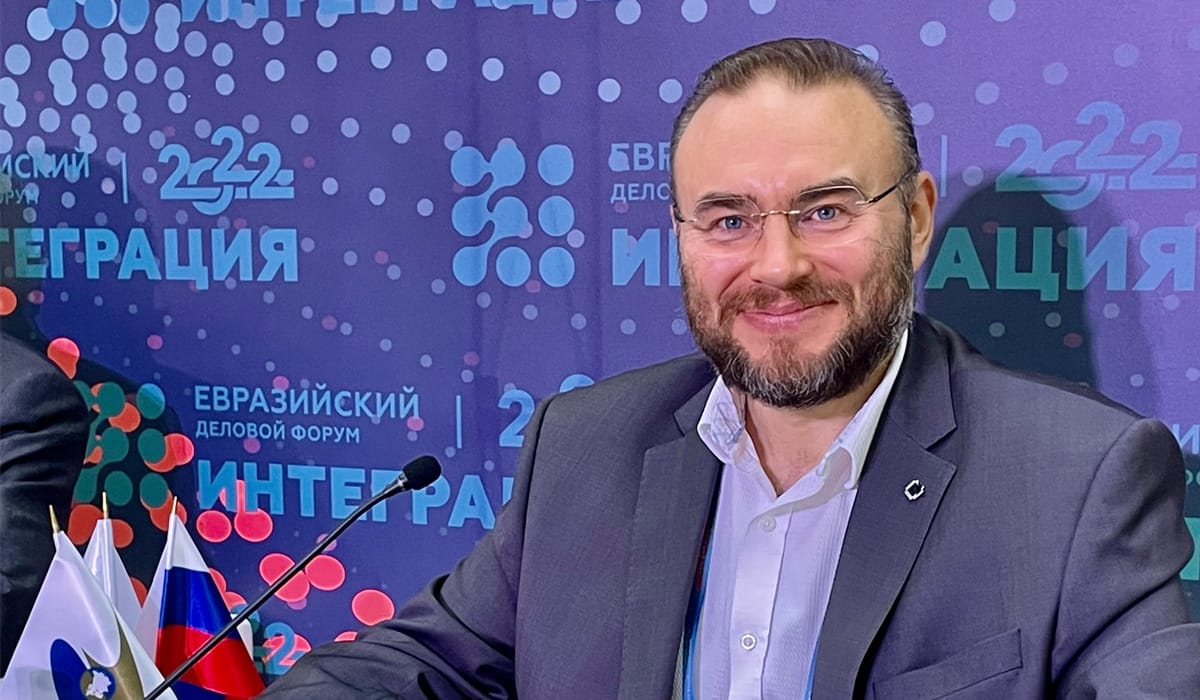The Oplati™ payment service was presented at the Eurasian Business Forum Integration in Moscow

The Belarusian payment service Oplati™could become a reliable foundation for mutual settlements within the EAEU. This was discussed at the Eurasian Business Forum “Integration” held in Moscow.
The discussion platform brought together officials, economists, experts, and business leaders. The main topic was state-business cooperation under the new economic realities of sanctions and restrictions. One key discussion point was payment flows—particularly how disrupted transaction chains have created payment inconveniences for bank card users in some countries. In response, Belarusian HTP resident company LWO proposed its solution.
“The most well-known and widely adopted product developed by our team is the Oplati payment service. The Belarusian Oplati service is the next step in evolution—an alternative to American payment systems. The reality is that neither we nor our neighboring countries have any other comparable closed-loop payment systems with this functionality,” noted Oleg Kondratenko, Director of LWO.
Oplati today
Paying for groceries, fueling your car, booking parking, making online payments, or sending money via chat through your phone have become basic necessities in today’s digital world.
Nearly 900,000 users (approximately 22% of Belarus’s mobile internet population) across 82 countries now trust Oplati, the mobile payment service created in Belarus.
The most fascinating aspect of new-generation cashless payments lies in accumulating customers’ digital activity results and bridging physical and digital worlds. While traditional cards or instant payment systems simply complete transactions, this new technology blossoms into a whole spectrum of possibilities.
It enables digital tickets, interaction with physical objects, and integration into secure urban environments (like notifying parents when a child scans a QR code to enter school, an apartment, or a bus). The technology also facilitates essential functions such as issuing e-tickets, coupons, certificates, parking reservations, and access to restricted areas – creating an ecosystem where every transaction opens new opportunities rather than just concluding a payment.





Many of us view smartphone payments as slightly upgraded versions of card payments. When it comes to cards in phones, this is true, but in reality, the world of true digital has advanced far beyond.
“When we started developing Oplati five years ago, we saw international systems charging Belarus nearly a hundred million dollars per year for transactions. While digitizing banks and preparing them for PCI DSS compliance, we understood the real situation and knew what we could create in this direction—a new, more efficient, powerful, and functional system that, by and large, represents the next evolutionary step for international payment giants,” said Oleg Kondratenko.
Both bank cards and QR codes are merely tools—you could call them “keys” to initiate a transaction. A QR code can embed card details, resulting in a card-based transaction, or it can contain a pathway to a domestic transfer system, creating an entirely different transaction. A QR code is simply a door. What truly matters is what it opens and where it leads.
The Oplati system can interact with card processors, but all its core processes operate independently. To top up an account, there’s no need to transfer from a card—it can be done directly from a bank account via the country’s fast payment system. Thanks to Oplati’s architecture, any bank in the country or abroad can use it.
Payments require no bank card infrastructure whatsoever. All that’s needed is internet access on the merchant’s side, an Oplati-compatible terminal, or a business smartphone with the Oplati for Business app. In this case, the buyer doesn’t even need an internet connection. A fully offline money transfer option, similar to cash handovers, may also become available in the future. For now, it’s easily done with two phones—one displays a QR code, the other scans it. The funds then move from one wallet to another, securely, quickly, and conveniently.